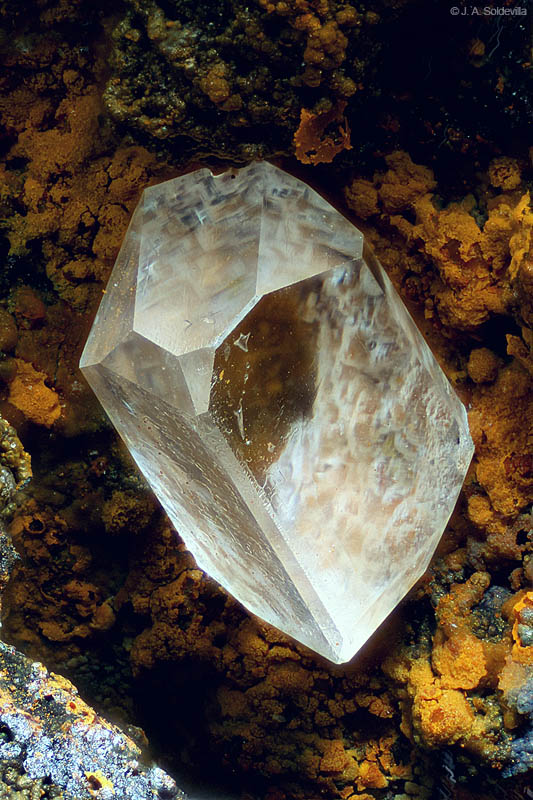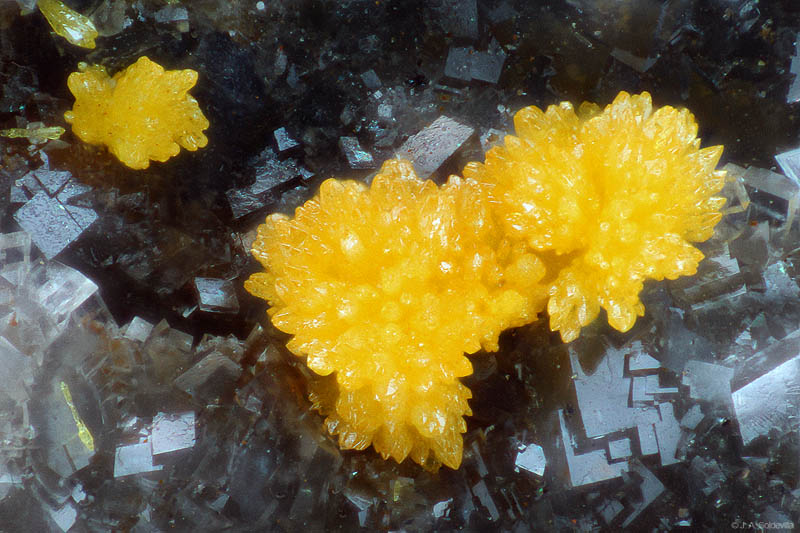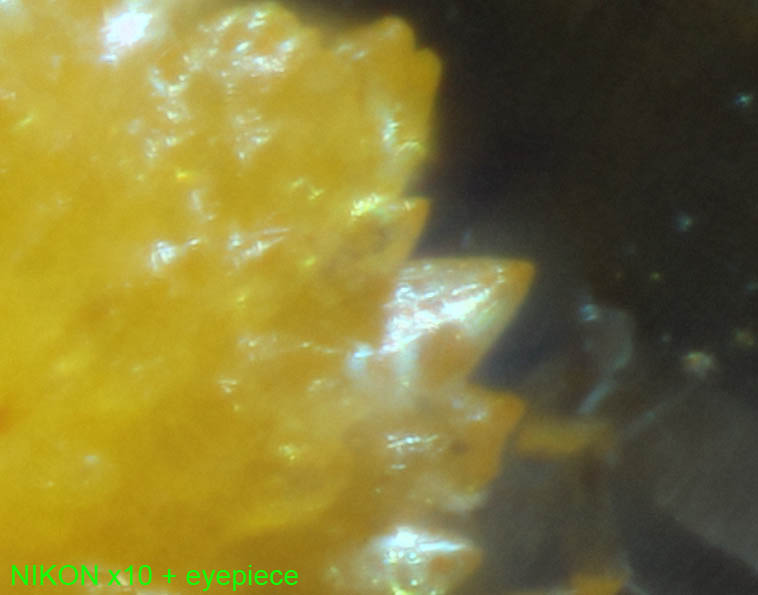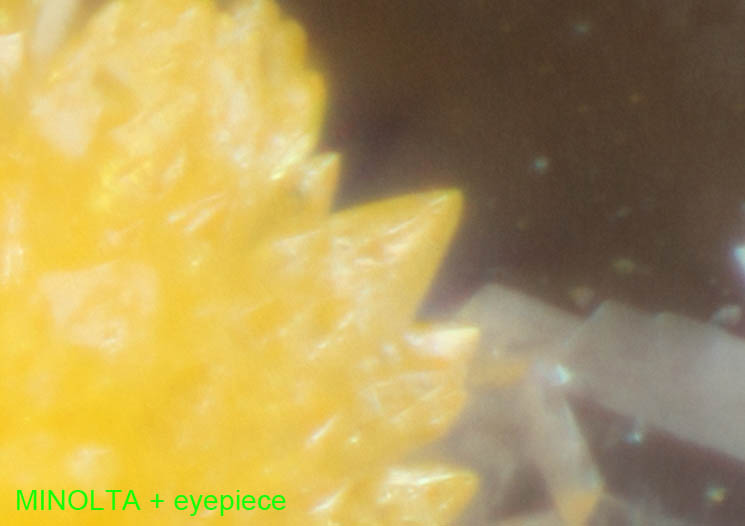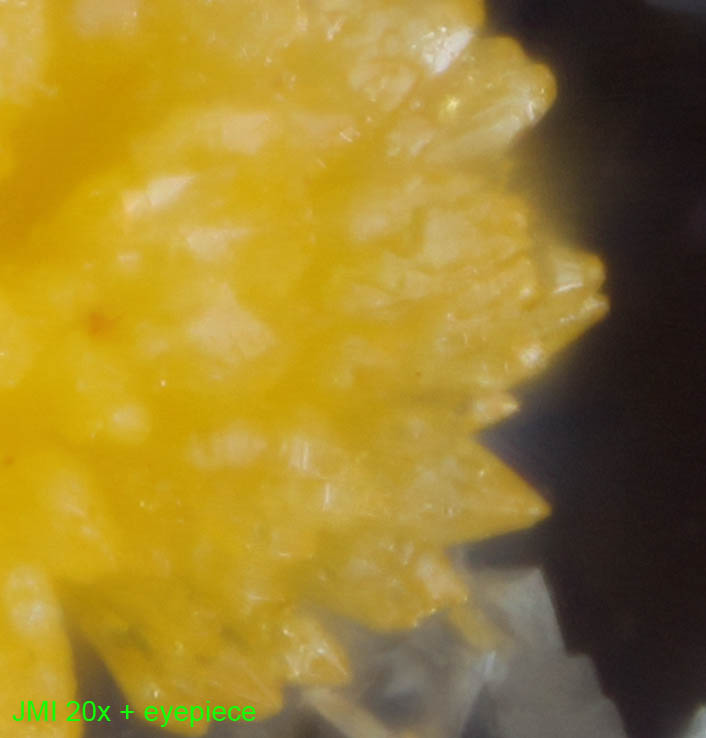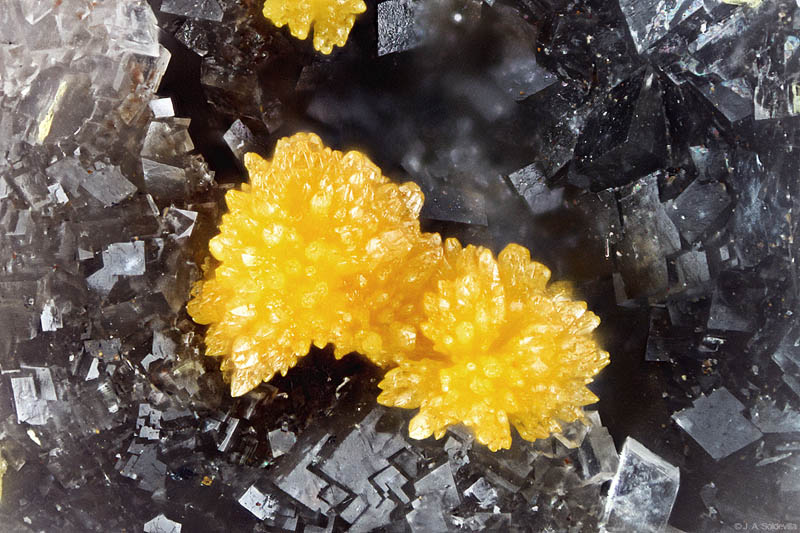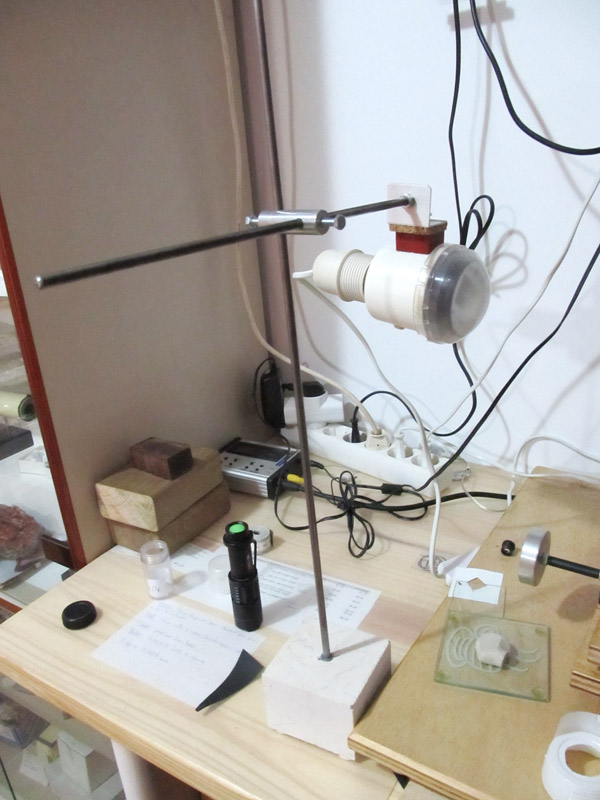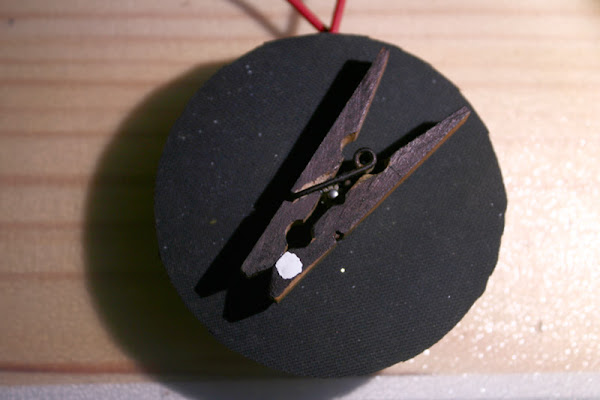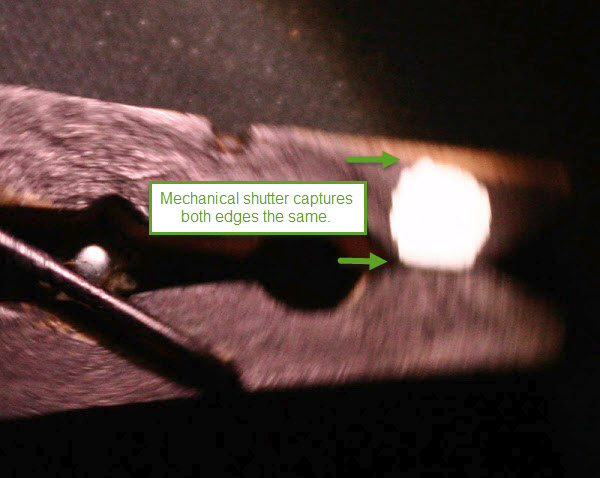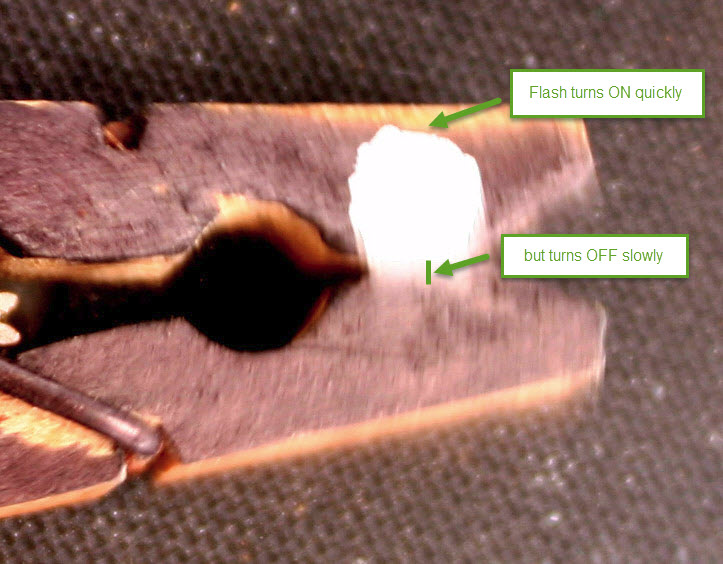soldevilla wrote:Okay, Rik. Is there an award for worst picture of the month? I win three at a time ...

Sorry, no award for worst picture. We might consider something for the most improved. So, in search of that...
Most of your setups have glass that is being used differently from how it was designed to be used. This is always a potential problem. I am especially concerned about the use of a relay lens, what you are calling an "eyepiece projector". It takes a very special lens to do that job well, and I have no idea what you are using there.
But in any case...
The image you show from the 10X objective looks pretty sharp.
https://lh6.googleusercontent.com/-tney ... ikon10.jpg
But it suffers from some sorts of "echos" :
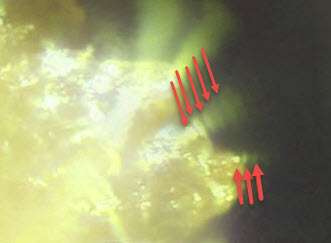
These look to me like what happens when a wide aperture lens is used with shiny crystals and the illumination is not diffuse enough.
I suggest to use your 10X optics, and set up some diffused lighting like shown by Ploum at
http://www.photomacrography.net/forum/v ... 005#175005. It is much better when the subject is bathed with light from many angles, instead of coming from just one or two flashtubes.
very nice seeing it in the binocular, because the contrast of colors, yellow over black.
Sure, but when you use the binocular you get to "cheat" -- focusing the microscope on exactly the bits that you want to look at, and ignoring everything else. In addition your binocular scope does not resolve very fine details, because it is made to use small aperture, to give more DOF at the expense of detail. It is harder to make an image that is sharper, and is sharp everywhere, especially when there is bright foreground and dark background. See
HERE for an explanation of that problem.
Revisiting the question you asked earlier...
I assume that the speed of flash is enough to stop any vibration, but seen the results, I no sure about it when I go to high magnifications. ¿someone has made tests in this way?
The results reported by other people, including myself, have been using consumer flashes that make shorter pulses at low power levels. But I think those flash bulbs that you're using always run at full power, so they always make light pulses around 1/1000 second, maybe longer. Those will not be as effective at freezing motion. I do not think that this motion is your problem, but I just wanted to mention this in case it is an issue.
Summary: try again, using your 10X setup, but with a lighting setup that is more diffuse like Ploum's.
--Rik
